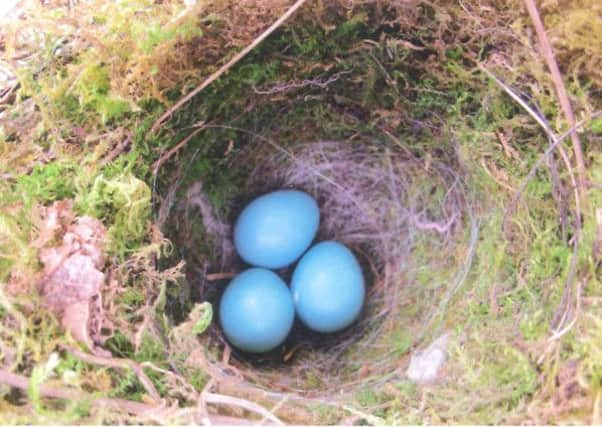RICHARD WILLIAMSON: Shake, shuffle and rock: Sex in the hedgerows


That is what I was wondering. Because, you see, the sex life of the dunnock is exceedingly curious.
Sussex folk had a number of different names for this bird.
Hedge-betty, hedge-mike, hedge-pick, hedge-pip and hedge-spick were all variations, depending on which area of Sussex you came from.
Advertisement
Hide AdAdvertisement
Hide AdIf you lived in Norfolk you called it a hedge sparrow. In Yorkshire it was hempie, in Wales, hedge warbler.
If you were a professional egg collector or if you worked in the British Museum, it was only called the hedge accentor.
All give a clue as to where this unobtrusive little brown bird lives; in hedges, especially overgrown hedges where there are brambles and thickets in which it cannot be seen.
Today everybody uses the same name, dunnock, which describes its dun colours.
It has a secret life, and it hides itself away to enjoy it.
Another name that countryfolk used was shufflewing.
They noted what the bird did when spring arrived.
Advertisement
Hide AdAdvertisement
Hide AdIt began a curious daily dance which involved a shake, shuffle and rock.
I watched a pair doing it this morning, out of my kitchen window. They were enjoying a little get-together. Later, I saw them on the ground, hidden away in the leaf litter in which they were almost invisible, for the oak leaves were the same colour as they were. But now they started to do something quite different. One of them sank down on to the ground and started to quiver. She lifted her tail and then shook all over.
Behind her, the male dunnock kept his distance, and stared at his mate.
All at once, he leapt forward like a jack-in-the-box, and pecked her bottom, the area known as the cloaca.
Advertisement
Hide AdAdvertisement
Hide AdHe performed this peculiar act again and again, each with lightning strikes.
Then almost too fast for the eye to record, he impregnated her, and fled away out of sight into the bushes.
She lay quite still for several seconds and after a while began feeding contentedly on the tiny crumbs I had scattered there earlier.
Although few people have seen this strange act, it has been recorded and is known to science. She has of course built a nest, using moss from the lawn, dried grass from the hedge bottom, and strands of deer hair from the wood. In this, her fertilised eggs will be laid as in my photograph of another year.
Advertisement
Hide AdAdvertisement
Hide AdBut as I said earlier: who will be the father of those eggs? Lurking in the undergrowth is another male. I hardly ever see him. But I have watched these dunnocks before, these quiet little birds who keep themselves to themselves.
I have seen the hens fuss around their mates and then just when the male thinks all is harmonious, she will suddenly slip away into another bramble bush where the lodger is waiting. It is all over in a flash, almost too quick for the eye to see.